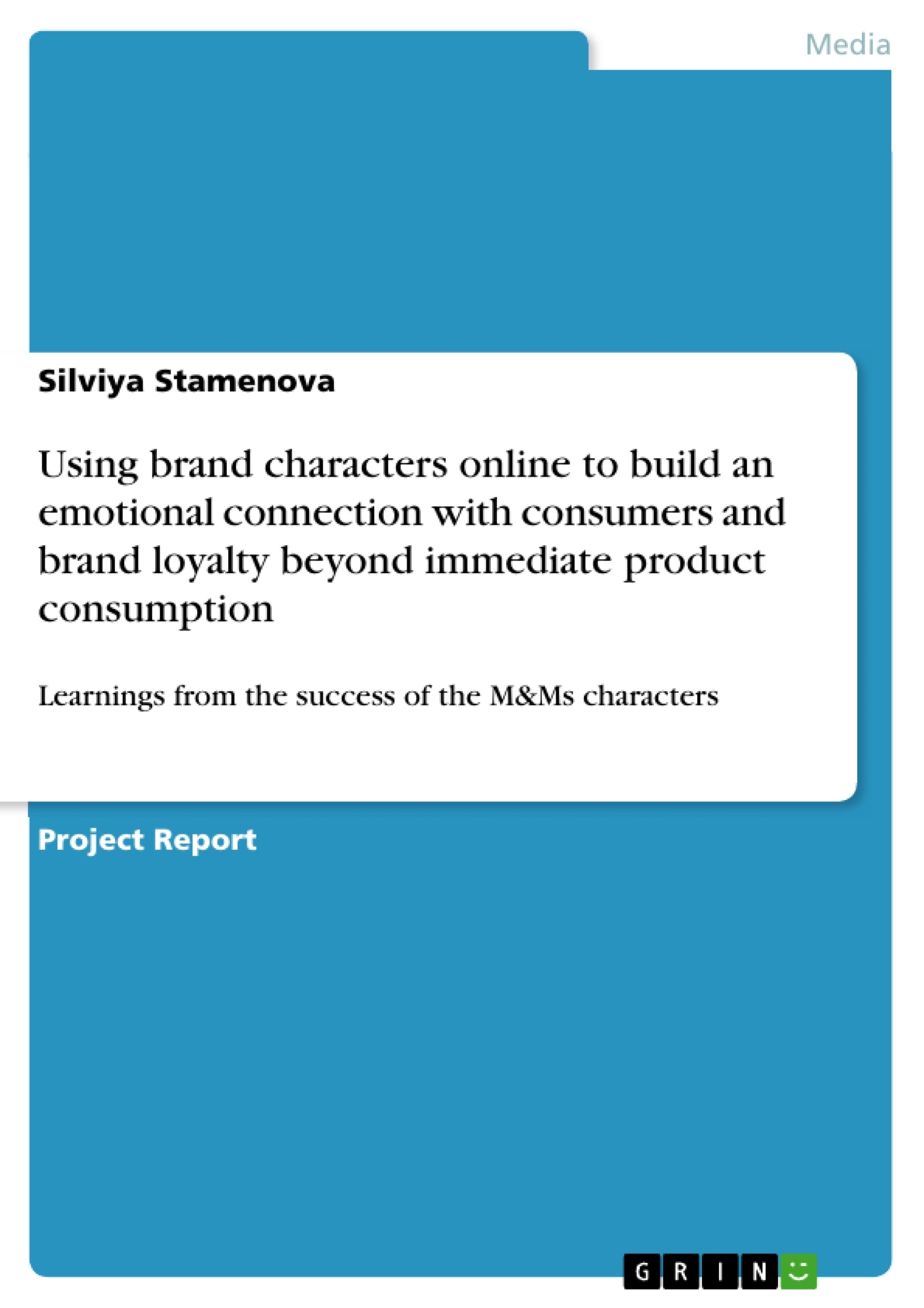The research addresses the question of how the usage of brand characters online builds an emotional connection with consumers and brand loyalty beyond immediate product consumption, which will be analyzed through the learnings from the success of the M&M’s characters. This will be achieved through extensive research using both quantitative and qualitative methods and analysis. As an initial step, a top-line literature review has been done, with a specific end goal to pick up knowledge about the hypotheses behind the phenomenon of using brand characters online to build brand loyalty.
This research requires the procurement of applicable information with respect to the importance and effect of using brand characters online.
This project underlines the multifaceted nature of the construct of brand loyalty and the need for an emotional connection towards a brand keeping in mind the end goal to be brand loyal. Then, consequently, the dissertation will take brand loyalty as a general behavioral approach, and identify with the emotional connection specified above in the construct of brand connection. Thusly, it will recognize both approaches by demonstrating the difference between them being the time for which the customer will keep up a tight relationship with a brand. It will argue that brand character usage online supports the prolongation of the time a customer is attached to a brand, due to the higher emotional connection which builds brand commitment.
Inhaltsverzeichnis (Table of Contents)
- INTRODUCTION
- LITERATURE REVIEW-GAP IDENTIFICATION (12 TO 20 ARTICLES)
- RESEARCH PROBLEM
- RESEARCH OBJECTIVES
- RESEARCH QUESTIONS
- METHODOLOGY DESCRIPTION AND JUSTIFICATION
- DRAFT OF DATA COLLECTION QUESTIONING ROUTES
- QUESTIONNAIRE DESIGN
- IN-DEPTH INTERVIEW QUESTIONS DESIGN
- A TIMETABLE OF THE DISSERTATION'S COMPLETION PLAN
- REFERENCE LIST
Zielsetzung und Themenschwerpunkte (Objectives and Key Themes)
The research investigates how the use of brand characters online fosters emotional connections with consumers and encourages brand loyalty beyond immediate product consumption. This is explored through the success of the M&M's characters. The research combines quantitative and qualitative methods to analyze the phenomenon of using brand characters online for building brand loyalty.
- The impact of brand characters on consumer emotions and brand loyalty.
- The role of online platforms in building brand connections through characters.
- The use of brand characters to create engaging content and consumer interactions.
- The importance of character design and development in establishing a brand identity.
- The effectiveness of brand character campaigns in achieving specific marketing objectives.
Zusammenfassung der Kapitel (Chapter Summaries)
The introduction outlines the research question, highlighting the significance of using brand characters online to build emotional connections and brand loyalty. It emphasizes the growing use of brand characters in online marketing and the need for understanding their impact on consumer behavior.
The literature review section focuses on identifying the existing research on the topic of brand characters and consumer engagement. This will likely include studies on brand personality, brand identity, and the influence of online platforms on consumer behavior.
The methodology description section details the research approach, including the research design, data collection methods, and analysis techniques. It explains the use of both quantitative and qualitative data, and the justification for choosing specific methods.
The draft of data collection questioning routes section presents the detailed design of the questionnaires and interview questions. It outlines the specific information sought from participants and the rationale for each question.
Schlüsselwörter (Keywords)
Brand characters, online marketing, emotional connection, brand loyalty, consumer engagement, brand identity, brand personality, consumer behavior, quantitative research, qualitative research.
- Arbeit zitieren
- Silviya Stamenova (Autor:in), 2016, Using brand characters online to build an emotional connection with consumers and brand loyalty beyond immediate product consumption, München, GRIN Verlag, https://www.grin.com/document/437341



